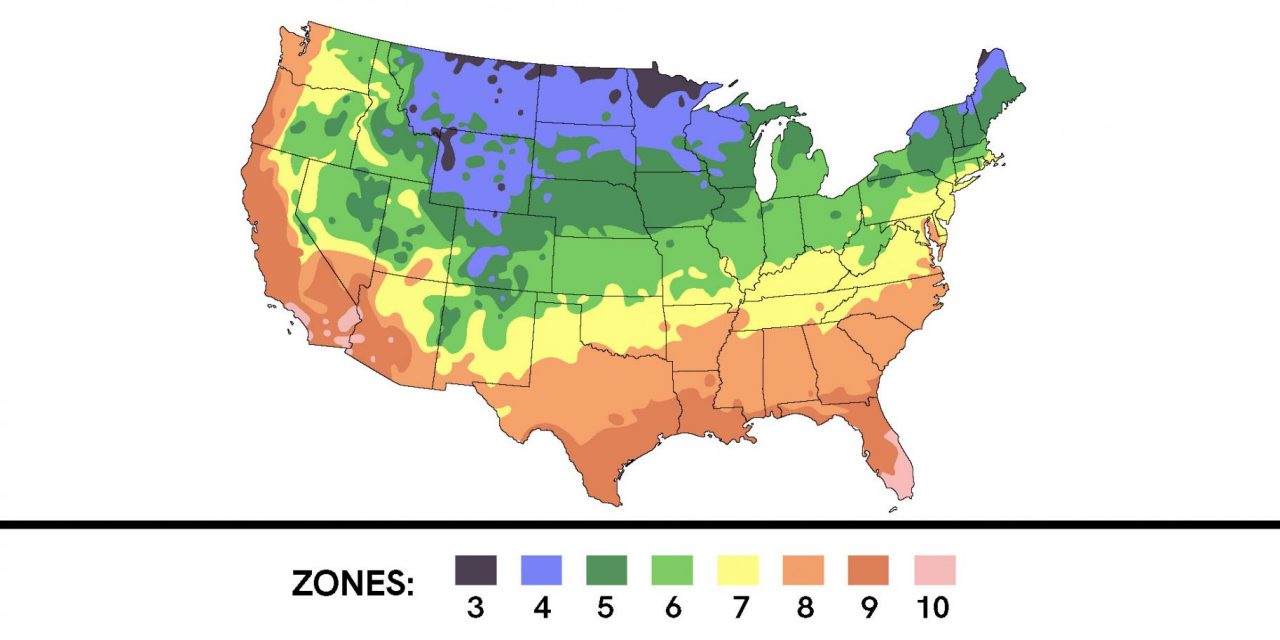I’m not sure if your grocery store is like mine, but right now, food is SO expensive. Unfortunately, I keep hearing that “it’s only going to get worse.”
If this is true, then I hope you are considering growing some of your own food this year. If you are new to edible gardening you may have several questions and one of them could be, “What are these USDA Plant Hardiness Zones (planthardiness.ars.usda.gov) that I keep hearing about?”
Simply put, this is a mapping system that is managed by the United States Department of Agriculture (USDA) and is based on how well different plants can survive cold temperatures in the United States. In central Oklahoma, we live in Zone 7. Even though the USDA Plant Hardiness Map is a very useful tool, it does have some shortcomings, including how much precipitation an area receives, first and last freeze dates and elevation. It is still, though, a very useful guide. It does give consideration to rainfall, summer temperatures, humidity and, a big factor that affects growing here in Oklahoma, the wind.
The Hardiness Zones are not terribly relevant when working with annual plants because by definition, “An annual plant is one that completes its lifecycle in a single growing season.” You usually do not worry about selecting annual plants that can survive your winter because they are not designed to do that anyway.
However, this map is very relevant when working with perennials—plants that are genetically capable of living two years or more. Plants are expensive, and if you invest in them then you obviously want them to survive. If you take the time to understand your hardiness zone then you should be able to make better choices when selecting plants that can survive your winters.
The Hardiness Zone Map is based on growing plants directly outside—not in a season extending device such as a high tunnel (hoop house), greenhouse, cold frame, etc. So, if you plan to use one of those type of structures, you can fudge your zone lines a little bit.
Although no map is perfect, it’s a very good guide for keeping you within your gardening and landscaping zone. It keeps you focused by guiding you to make wise decisions, so that you can be successful. It’s a very helpful tool.
Another very helpful tool that we have at our fingertips is God’s Word. In Psalm 1:1- 6 we read, “Blessed is the person who does not walk in the counsel of the wicked, nor stand in the path of sinners, nor sit in the seat of scoffers! But his delight is in the Law of the Lord and on His Law he meditates day and night. He will be like a tree planted by streams of water, which yields its fruit in its season, and its leaf does not wither; And in whatever he does, he prospers. The wicked are not so but they are like chaff which the wind blows away. Therefore the wicked will not stand in the judgment, nor sinners in the assembly of the righteous. For the Lord knows the way of the righteous, but the way of the wicked will perish.”
What a beautiful illustration of God’s Zoning Map! In these verses, we clearly read how to stay in the “God Zone.” His Word tells us that if we’ll make wise decisions then we can be like a tree planted by streams of water, which yield its fruit in season, and its leaf does not wither. This is a healthy tree. A productive tree. A strong tree. This is especially interesting because the backdrop of this illustration was a dessert. Most trees growing there were trying to survive in a harsh and difficult environment. They were scrawny and unproductive—but not this tree.
This passage also shows us what happens when we choose to make poor decisions. The result is the same in our lives as it would be in our gardens. If we select a tender, tropical plant and try to grow it outside during an Oklahoma winter, this plant would surely perish. If we choose to step outside of God’s plan (God’s Zone) then, eternally speaking, so do we.
May God help us to see the benefits of staying in the Zone.






